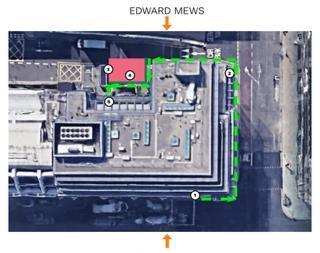The build-to-rent (BTR) sector continues to grow strongly, backed by government support and housing need.

The number of BTR homes completed, under construction and in planning across the UK grew by nearly a third in the year to the end of Q1 2018, according to the latest BPF and Savills report.
While London still marginally leads in terms of market share of BTR homes completed or in planning, the UK’s regions now have a significant lead over London in terms of greenlighting developments, accounting for 62% of all BTR homes under construction. As population density spreads from London across the rest of the UK, so the BTR sector should also expand to meet growing occupational demand.
However, as the sector evolves, some areas require further development to help it mature. Performance management and benchmarking for UK residential funds is one such area, as the benchmarks available do not fully represent the market’s scale and composition.
High-quality benchmarking can aid transparency, increase competition and help property management, operations and facility management to evolve by allowing investors to compare their activities against their peers. Sharing such data across the industry can aid best practice, which can only be a positive step for fund returns and therefore for our customers.
Smart data use is a second priority area that can improve investment analytics and better inform deal decisions. We have been trialling artificial intelligence in two UK regional cities to identify potentially suitable locations for BTR investment.
Understanding the priorities of ‘generation rent’
The tool combines ‘big data’ sources from Rightmove, Land Registry, Google Analytics, Google Maps and Twitter – for example, the number of restaurant ‘check-ins’ or the volume of tweets from a certain location – as a proxy for gentrification in an area, which may suggest higher occupational demand. This complements our proprietary tool that evaluates locations on variables such as international net migration, disposable income and population growth of the key target market.
Understanding the different priorities and requirements of ‘generation rent’ is critical. But we don’t rely on data alone and still also favour walking around areas to get to know them.
Sustainability and energy efficiency is another area where more work needs to be done. Improving buildings’ green credentials brings practical benefits and helps attract renters, particularly millennials, who are looking for affordable and environmentally friendly homes.

Although our industry parameter, the Code for Sustainable Homes, is no longer obligatory and the Home Quality Mark (which takes cost, wellbeing and environmental footprints into account) is a voluntary national consumer standard, building homes to a high standard of sustainability should be considered mandatory.
From 1 April, a minimum energy performance rating of ‘E’ came into effect for Energy Performance Certificates (EPCs) for private rented homes. However, this is a low bar to meet and many industry participants, including ourselves, target ratings of at least ‘B’.
As the BTR sector matures, we as participants should refine our approach to creating performance benchmarks and setting high standards for minimum construction/building requirements.
This should ensure that as we build homes for the future, they stand the test of time. Using data effectively can teach us valuable lessons in investment and architectural practices, which is the next step in the sector’s evolution.































No comments yet